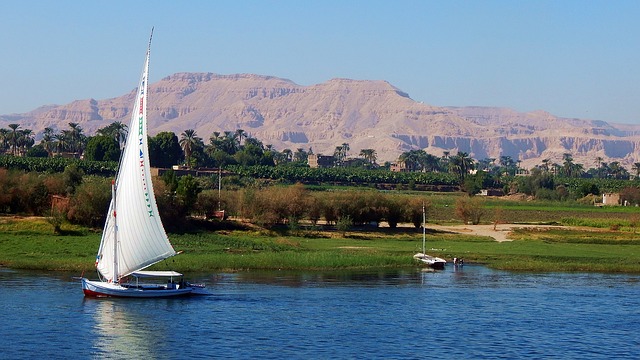An Essential Guide To The Nile River
- Cheeko
- 0
- on Jul 20, 2022

The Nile River has been a source of sustenance and the focus of worship since the dawn of civilization. It is a river that has fascinated historians and archaeologists and its waters have given birth to legends. In this piece, we take a closer look at why the Nile has influenced the culture of civilizations on or near its banks – but also just how visitors to Egypt can enjoy the wonders of this mighty river. Before going further into the article you may want to see ms liberty Nile cruise.
Geographical location – and Statistics
The influence of the Nile is by no means limited to Egypt this river meanders through many countries – from North Africa towards its mouth on the Mediterranean Sea. It passes through Tanzania, Rwanda, Burundi, Uganda, the Democratic Republic of the Congo, Kenya, Eritrea,Ethiopia, South Sudan and the Republic of Sudan – 10 countries in all. On that journey, its yearly inundation of the Nile Delta in Egypt is as important to agriculture as it was thousands of years ago.
Those who travel its full length will encounter some of the most storied geographical features in Africa – from the Blue Nile Falls to Lake Victoria and Lake Albert, as well as Murchison Falls.
The Nile itself is fed by three tributaries. There is the ‘Blue Nile’, the ‘White Nile’, and the relatively modest Atbara River. The age-old search for the source of the Nile for many years did not take into account the fact that the Nile does not have a single source, but rather a number of sources. In fact, even today the source of the White Nile is a subject of some dispute – theories have it originating in Burundi or Rwanda. This is the greatest of the Nile tributaries – in length at least, although it should be noted that it only contributes around 20% of the volume of the Nile. The origin of the Blue Nile is easier to pinpoint – it has been located at Ethiopia’s Lake Tana, flowing through that country and then Sudan before joining the White Nile just to the North of Sudan’s Executive Capital – Khartoum. The Atbara has its origins not far from Laka Tana (Ethiopia).
The length of the Nile is hard to estimate – but it is widely accepted to be in the region of 6,650 kilometres long. There is some debate as to whether the Amazon in South America is longer – but that is a debate that is ongoing – the fact is that the Nile is indisputably the longest river in Africa. It may not be as impressive n terms of the sheer volume of water it carries – for instance, the Congo River carries 95% more water, but there are other statistics that provide some idea of just how influential this river has been throughout history. For instance, the Nile’s drainage basin covers 3.3. million square kilometres, about 10% of the entire African continent. It is no exaggeration to say that if the Nile should disappear the cultures that enjoy the fruits of that enormous drainage basin would simply cease to exist.
The Nile of Prehistory.
To say that the Nile has been a landscape feature for aeons is to understate the case. The river has been flowing for around 31 million years. In fact, it was once much longer than it is today. Millions of years ago the river was fed by Lake Tanganyika in Northern Zambia. The rise of the Virunga Mountain range (along the borders of the Democratic Republic of the Congo (DRC), Rwanda and Uganda) cut off that source until millennia ago.
Today, when one mentions the Nile the image of Egypt immediately springs to mind. And it is true that the ebbs and flows of this mighty river have exerted enormous influence over thousands of years of Egyptian culture. However, it was not always that way. The original course of the river bypassed Egypt entirely – it originally flowed through Libya to reach the Gulf of Sidra. The last ice age changed that. Rising sea levels caused it to divert to its current course – and it became the engine that powered civilizations in both Egypt and Sudan.
The Central Role of the Nile in Ancient Egypt
Life in ancient Egypt revolved around the Nile. Egypt’s rich trove of monuments and ancient cities can be found along its banks. Residents relied on the mighty river for drinking water, bathing, and transport. They thrived on its rich bounty of fish and marshbirds and relied on the river for recreation. Of course, the Nile allowed Egyptian civilization to develop one of the most advanced agricultural systems in the ancient world. Harnessing the waters of the Nile allowed farmers to grow crops that would otherwise have simply wilted in the glare of the harsh desert sun of Northeast Africa.